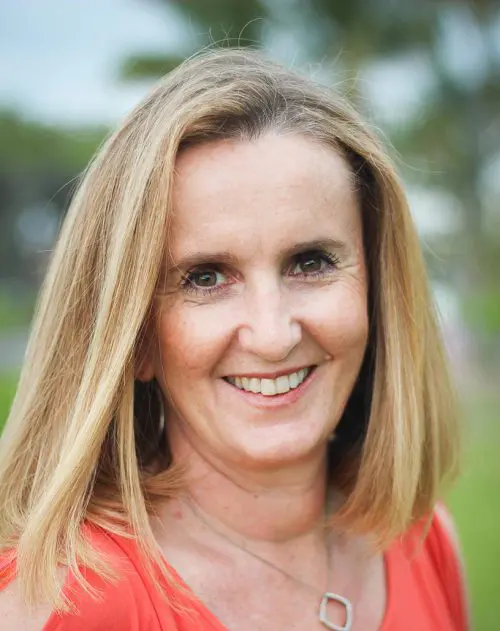Nov 30, 2023
Exploring Indigenous Cuisines

A Culinary Adventure at the Hawai’i Food and Wine Festival
On October 20th, the Hapuna Realty team and I had the incredible opportunity to attend one of the delicious events of the Hawai’i Food and Wine Festival: “Kamehameha Schools Presents Indigenous World Cuisines.” In a beautiful outdoor setting at Mauna Kea Beach Hotel, the grand tasting was a captivating experience that immersed us in the rich and diverse culinary heritage of the Hawaiian Islands and beyond.
But what is Indigenous World Cuisine? Various chefs and food experts define it as food which is natural to a certain geographic area, including plants, wildlife, and fish. It also includes the way these foods are grown or gathered, prepared or cooked, and the way they are preserved, as well as their stories and cultural significance. Interesting!
As we strolled into the event at sunset, we were greeted by a vibrant atmosphere filled with tantalizing aromas, fun party lights, champagne corks popping and the smooth sounds of Joe Conti on stick guitar. The intriguing tasting menu showcased a variety of indigenous cuisines from around the world, highlighting the unique flavors and techniques that have been passed down through generations.

From traditional Hawaiian dishes to international delicacies, there was a wide variety of savory and sweet options to indulge in. Authentic, indigenous foods from Hawai’i were well-represented with mouthwatering presentation by Chef Kealoha Domingo of Nui Kealoha Catering. His Pork Lū’au was composed of smoked pork belly on stewed Kākoʻo ‘Ōiwi lū’au (young taro tops) and hand pounded paʻi ‘ai (undiluted poi) and ingredients from his own farm on O‘ahu.

Our culinary “voyage” took us across the Pacific to taste indigenous Maori and Samoan dishes too. I loved Chef Monique Fiso’s charred lamb rack with taro, coconut and kōwhitiwhiti (watercress from New Zealand). She used Hawai’i Island-raised lamb to raise awareness about sourcing and eating local foods.
On the other side of the world, we met Chef Tim Balloo, whose Caribbean jerk butter lobster dish was one of my favorites! It was prepared with spices from Trinidad and Jamaica—and absolutely ‘ono with just the right amount of kick. I also loved Chef Ricardo Zarate’s Skirt Steak Parrillada, made with Honolulu Meat Co. skirt steak, salsa verde, quinoa with native roasted vegetables and rocoto sesame dressing! Delicious.

We had the chance to try dishes from Native American cultures, such as the Turtle Island Tribe-Oglala Lakota. Chef Sean Sherman shared flavors from his award winning restaurant in Minneapolis, in a dish called “wamnáheza k’a táȟča thadó.” It consisted of nixtamalized* Potawatomi corn and wild rice grain bowl with white cedar Mauka Meats venison, yellow corn shoots, rosehips and poha berry wóžapi (like a pudding). His cookbook, The Sioux Chef’s Kitchen, won a James Beard Award, in addition to his restaurant.
And, I don’t think I’ll ever forget Roy Yamaguchi’s Chocolate Cake with Mauna Loa’s unbelievable dairy free Kona Coffee Macadamia Nut Ice cream made with 100% Kona coffee beans and island mac nuts, of course.
Kamehameha Schools, who presented the Indigenous World Cuisines pā‘ina (feast), is an organization dedicated to providing educational opportunities for Native Hawaiian children. So, by attending, we not only had the opportunity to savor incredible flavors but also contribute to a worthy cause. In addition, the chefs were assisted by culinary students from Hawai’i Community College UH Palamanui Campus.

I was told by one of the organizers that before they started preparing, the chefs were invited to a special ‘awa ceremony at Puʻukoholā Heiau, conducted by Chef Kealoha Domingo. I realized that, beyond the delicious food, the event provided a platform for cultural exchange and appreciation. We had the privilege of engaging with these multi-talented chefs who shared their stories and insights into the significance of indigenous cuisines. It was a reminder of the power of food to bridge cultures and foster understanding.
My experience at Hawai‘i Food and Wine Festival’s Indigenous World Cuisines grand tasting was truly wonderful. It was a celebration of culinary diversity, cultural heritage, and community. We left with hearts and stomachs full, inspired by the flavors and stories that we encountered. We are grateful to have been a part of this remarkable and very special occasion!
*Nixtamalization is a process for the preparation of maize, or other grain, in which the grain is soaked and cooked in an alkaline solution, usually limewater, washed, and then hulled.




